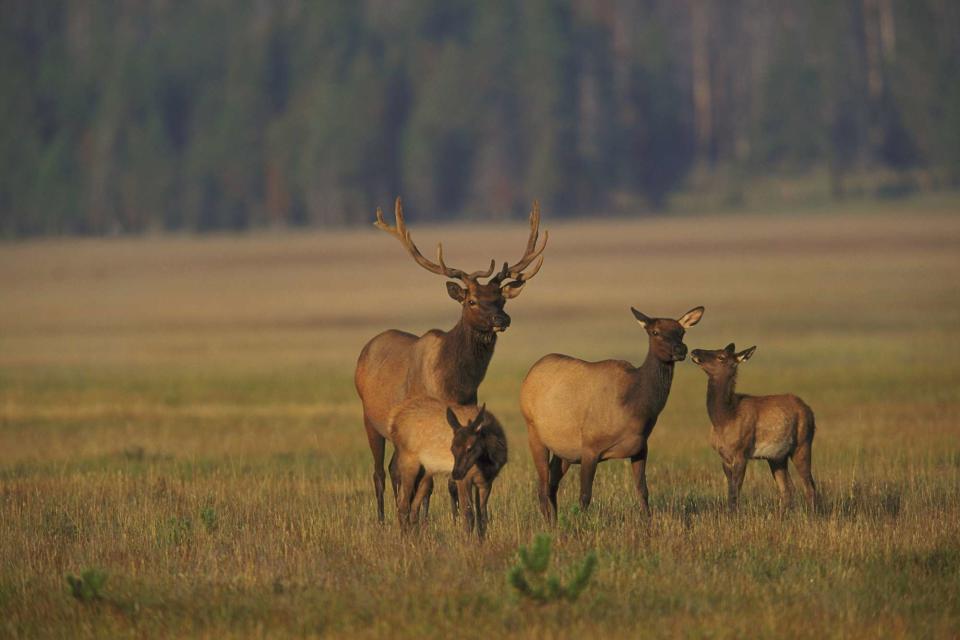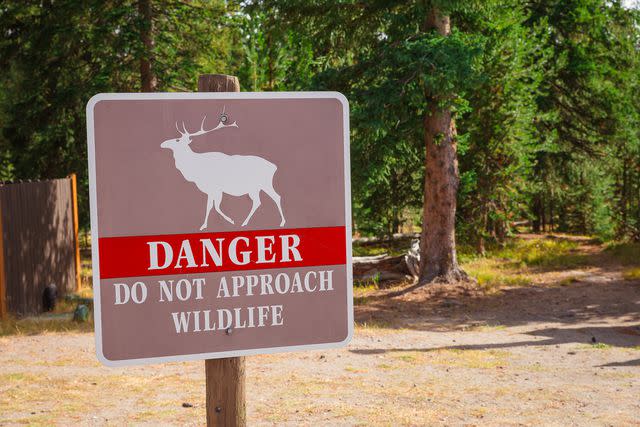Why Yellowstone National Park Visitors Should Be Extra Careful Around Elk Right Now
Elk calving season has begun which could potentially lead to the animals becoming extra aggressive.

Stan Osolinski/Getty Images
The National Park Service is warning visitors to Yellowstone National Park to take extra care as elk calving season has begun and the animals may become extra aggressive.
The warning comes as the park’s female elk (who are known as cows and can weigh about 500 pounds) have started to birth their young, a season which typically lasts from May to late June. Travelers are cautioned to stay at least 25 yards away from elk at all times.
The NPS warned attacks can be “unprovoked and unpredictable.”
“Cow elk are much more aggressive towards people during the calving season and may run towards you or kick,” the NPS wrote in its warning. “Stay alert. Look around corners before exiting buildings or walking around blind spots: cow elk may bed their calves near buildings and under cars.”

Elena Pueyo/Getty Images
If an elk does run toward a park goer, the NPS said they should find shelter in their vehicle or “behind a tall, sturdy barrier as quickly as possible.”
In Yellowstone National Park, there are estimated to be about 10,000 to 20,000 elk in six to seven herds, according to the park. In the summer, they can typically be found in Cascade Meadows, Madison Canyon, and Lamar Valley.
Yellowstone National Park, recently named the best national park in the United States by Travel + Leisure readers, has an abundance of wildlife that roam the park, including 67 different mammals like bison, moose, black bears, grizzly bears, mountain lions, and wolverines.
Park goers are expected to keep a safe distance from many animals in the park, according to the NPS, like staying at least 100 yards away from bears and wolves and at least 25 yards away from all other animals. Additionally, visitors are told to never feed animals as “animals that become dependent on human food may become aggressive toward people and have to be killed.”
Summer is one of the best times to visit Yellowstone to see its plentiful wildlife, especially for elk, moose, bison, and mountain goats.
For more Travel & Leisure news, make sure to sign up for our newsletter!
Read the original article on Travel & Leisure.


